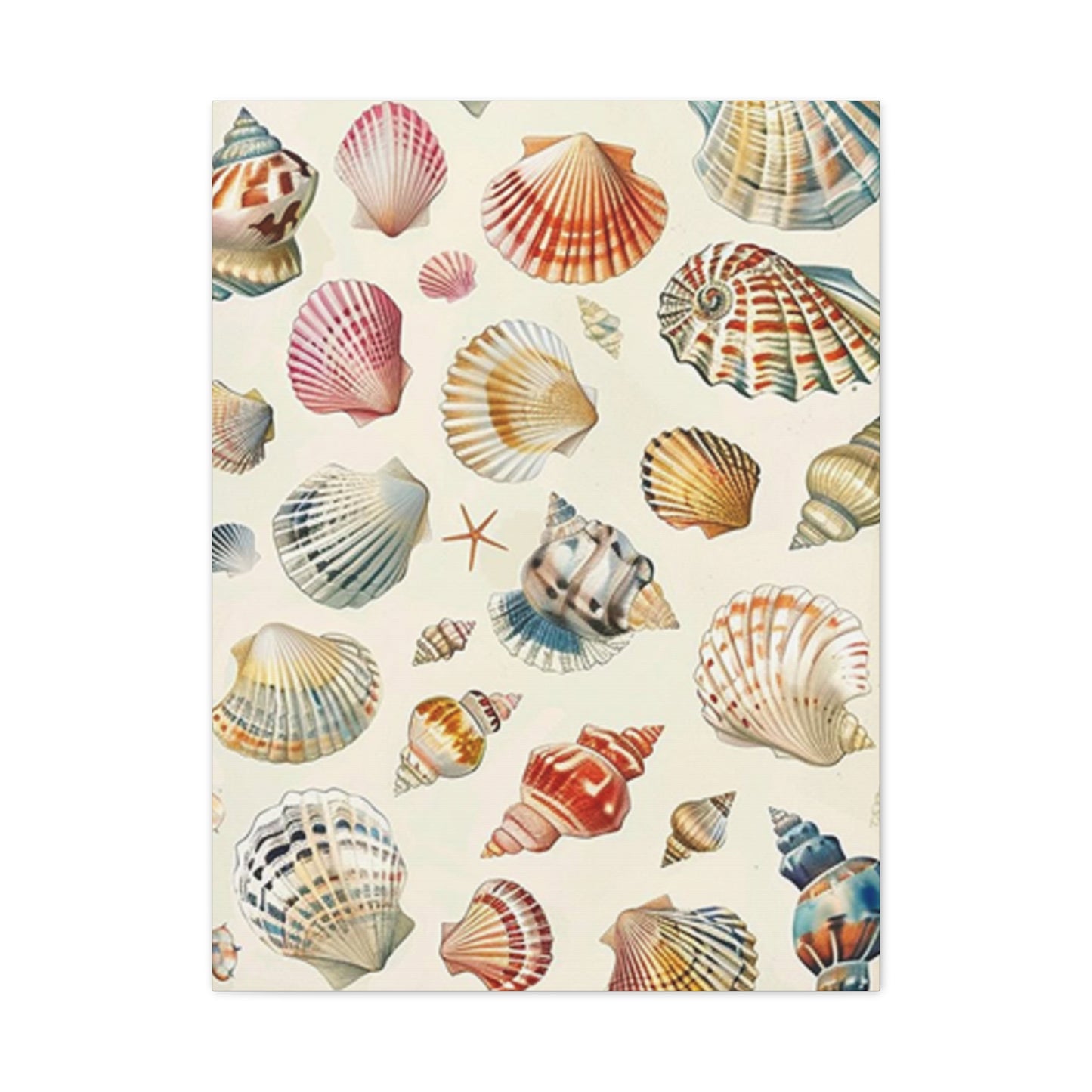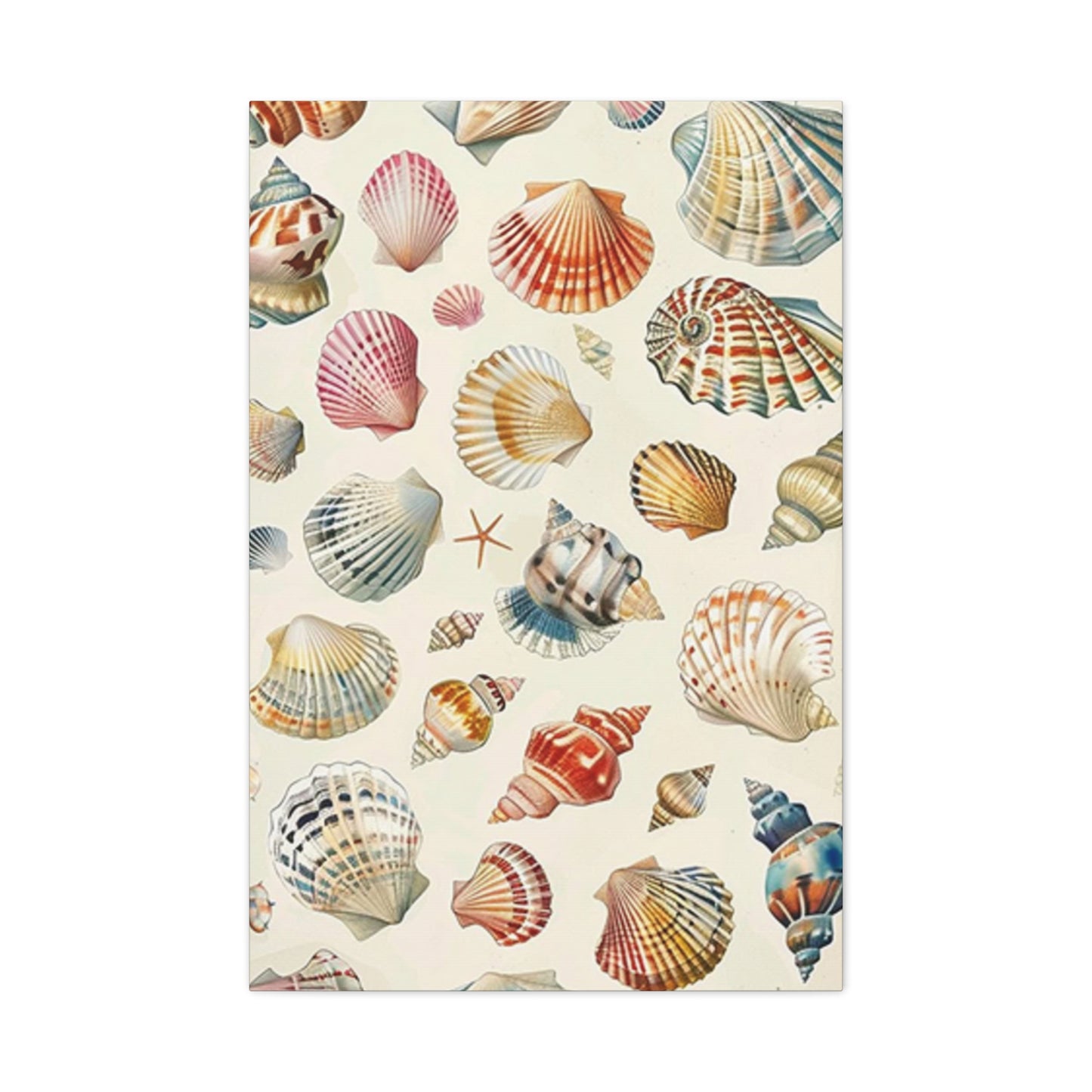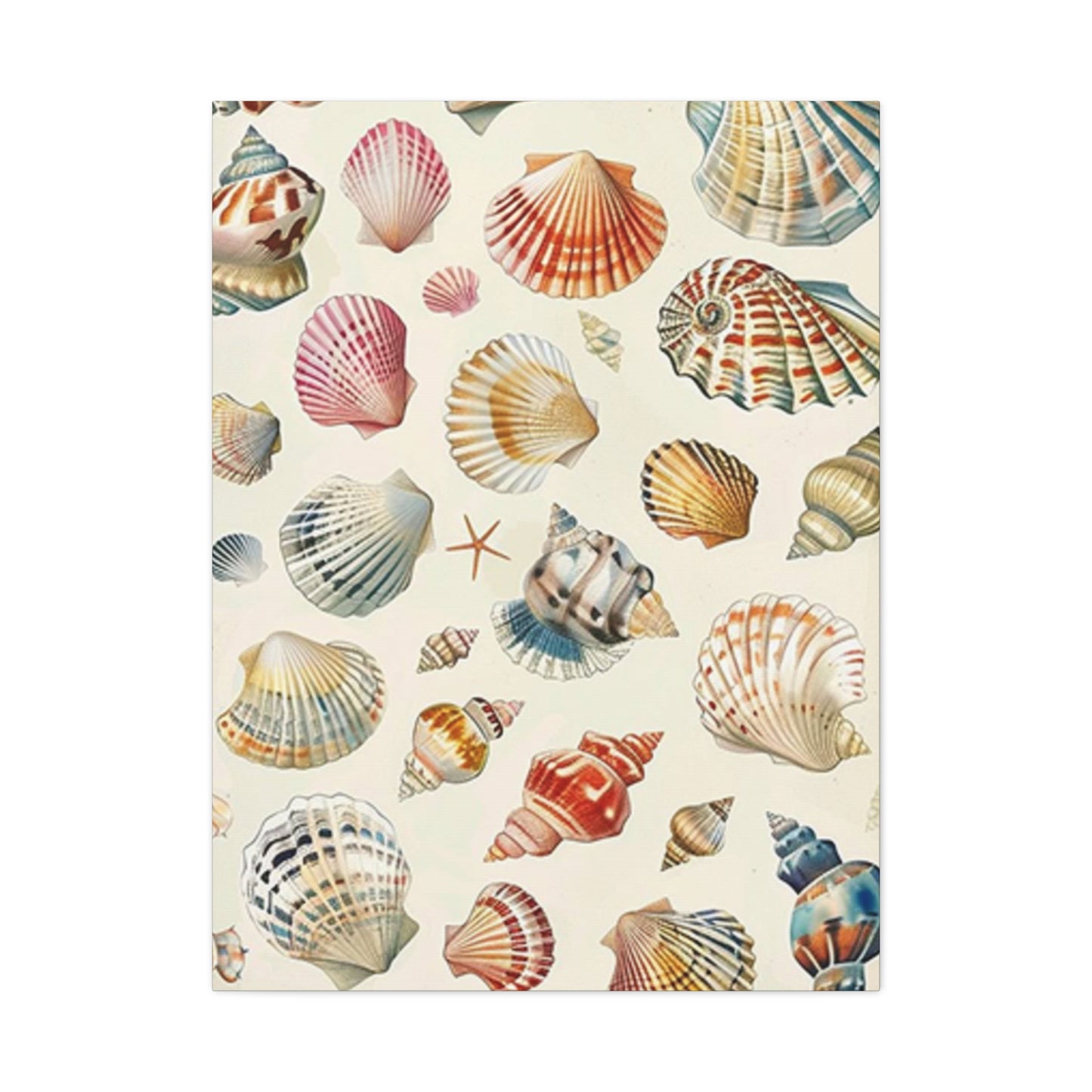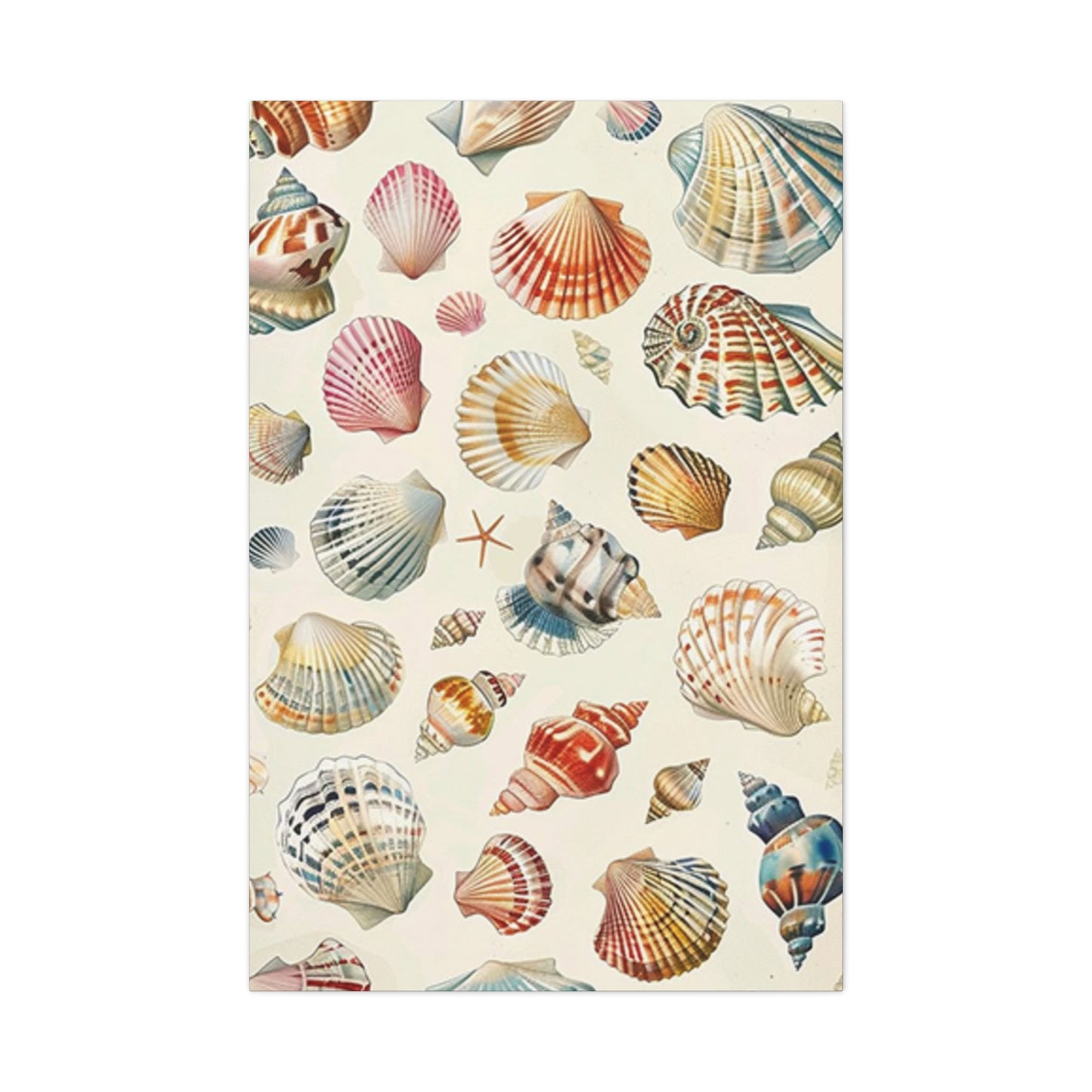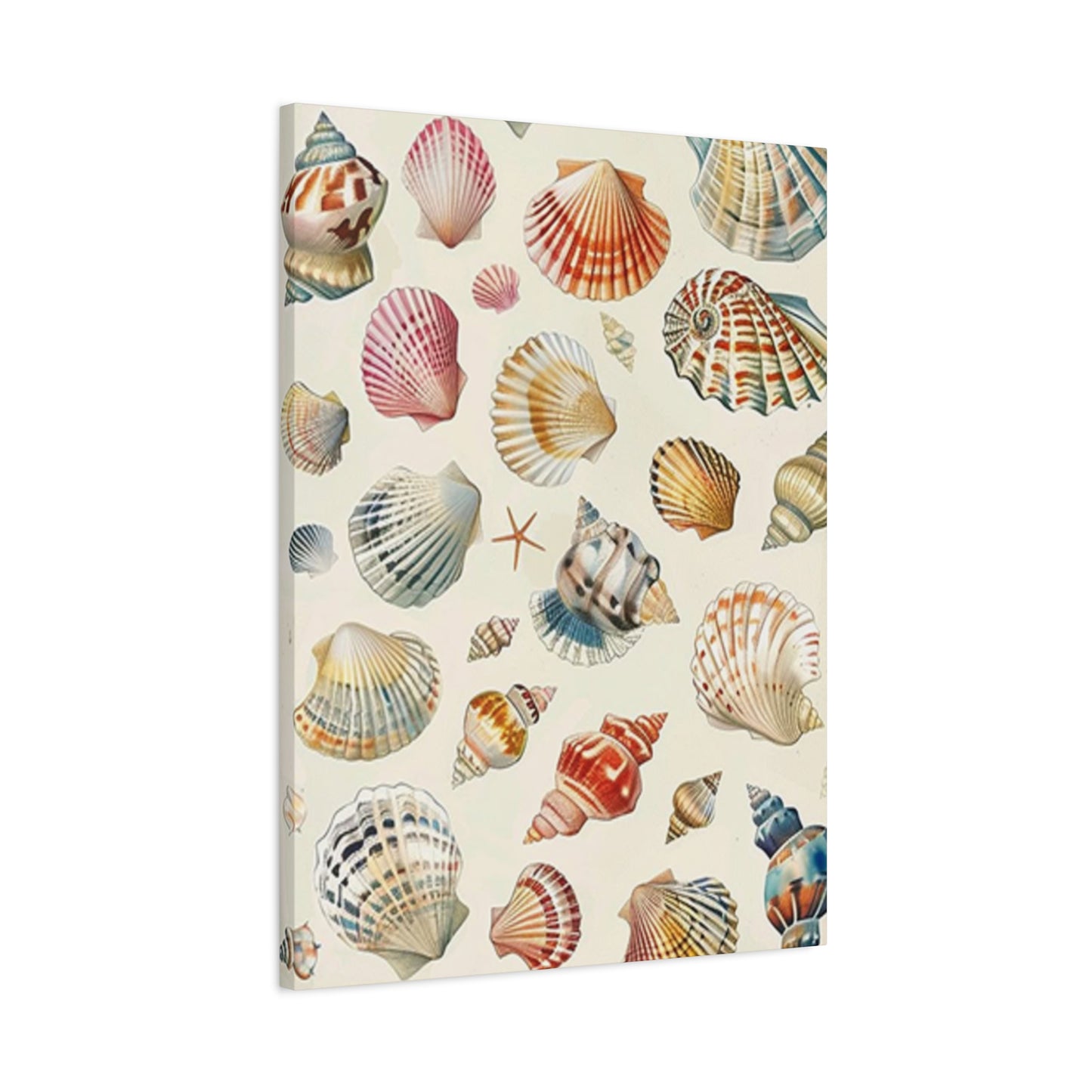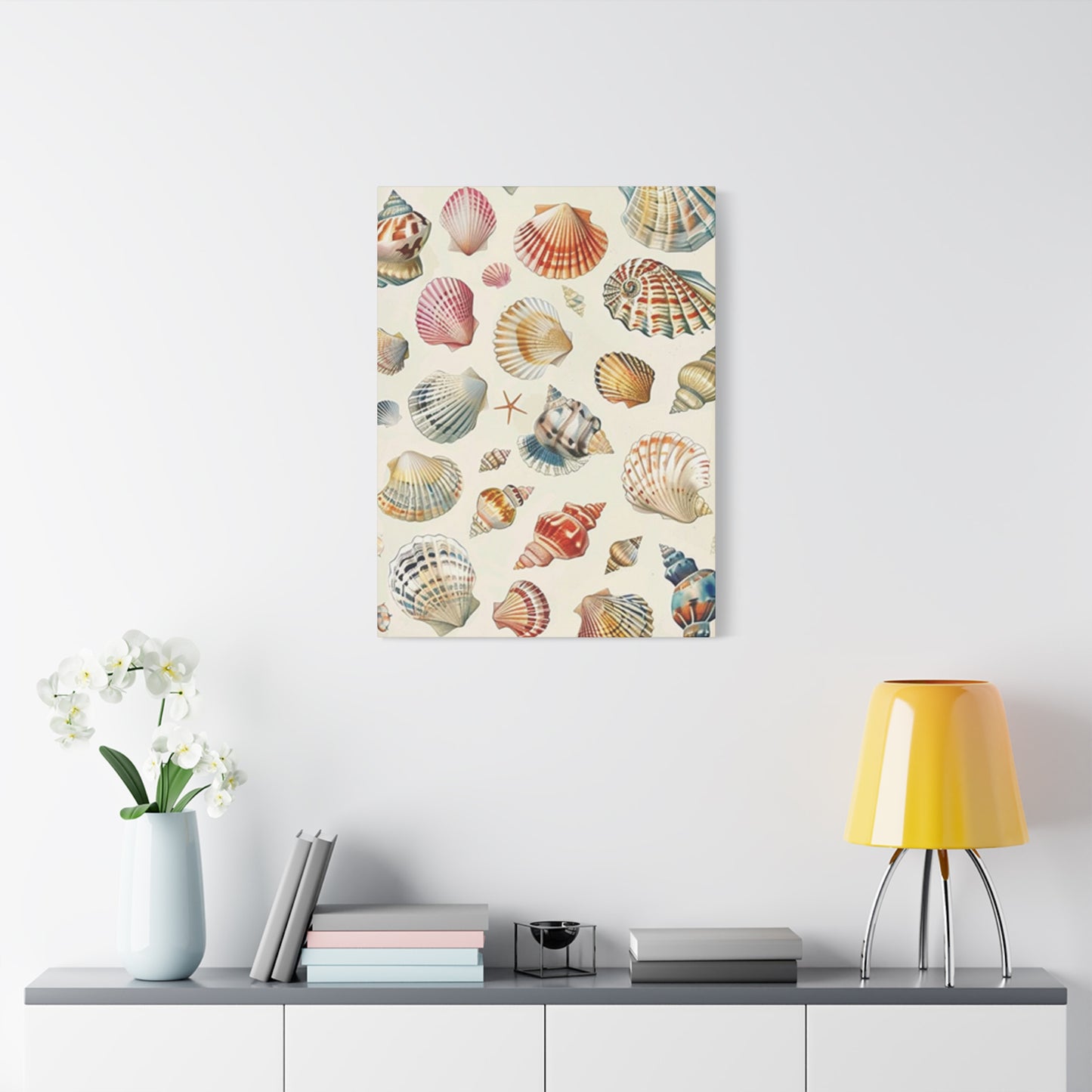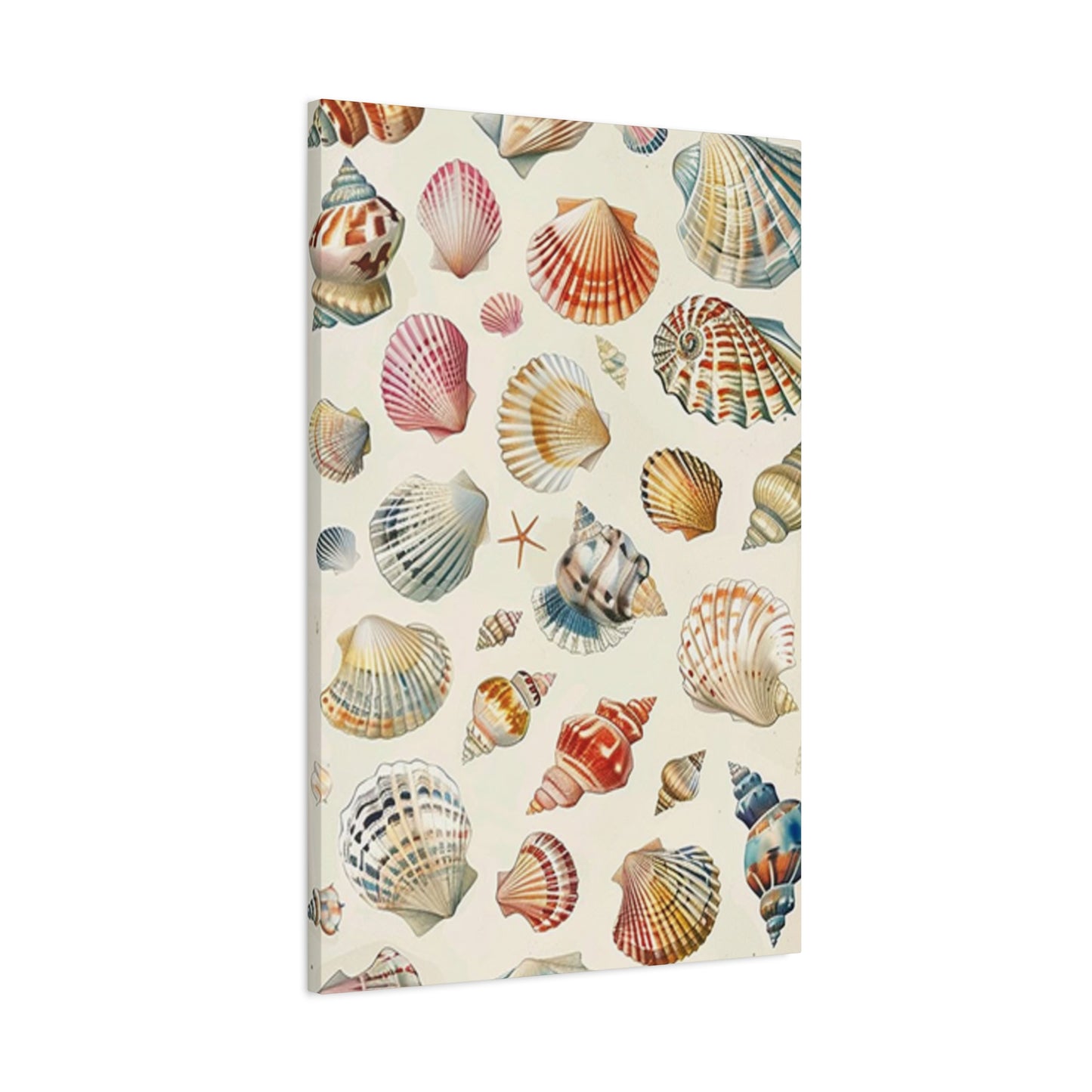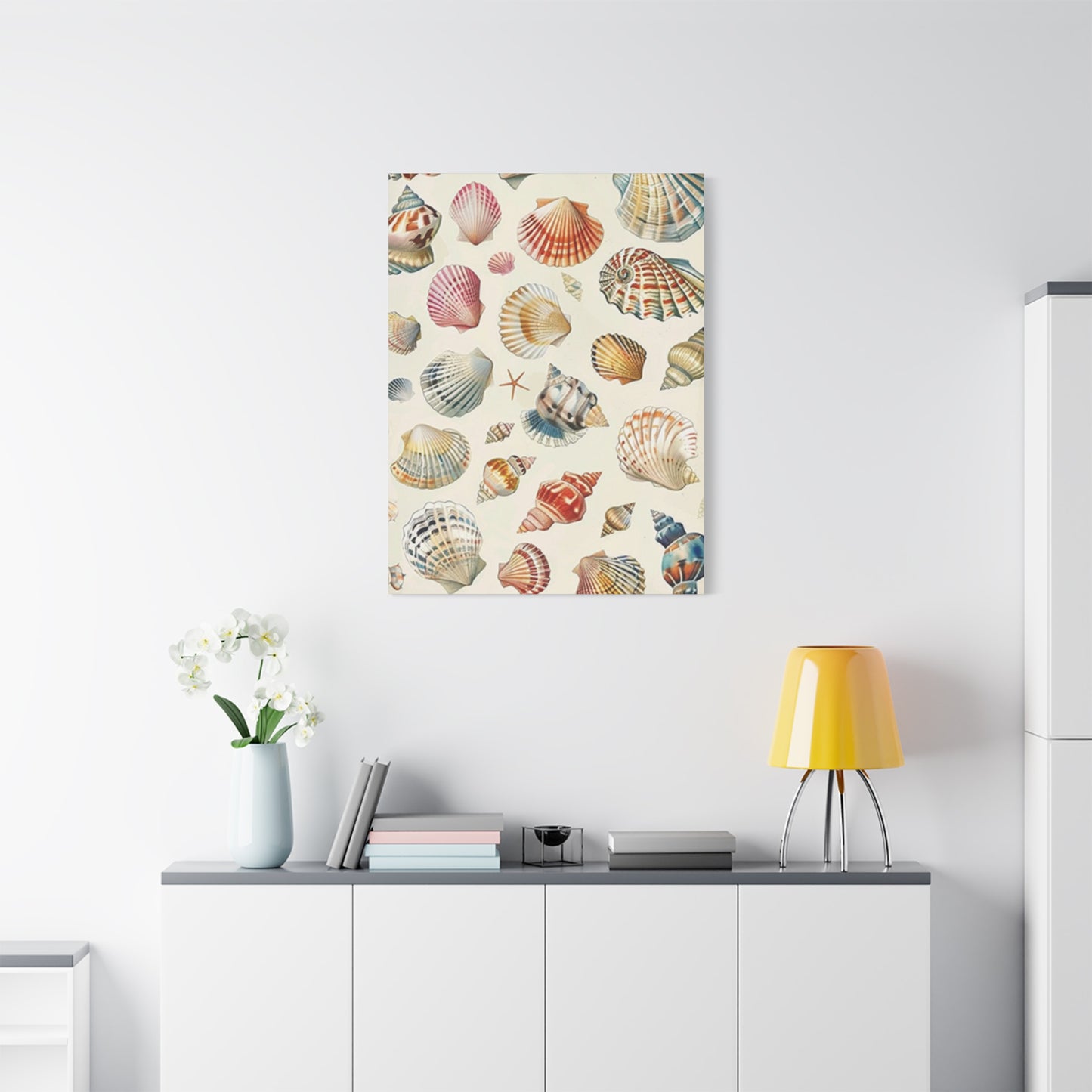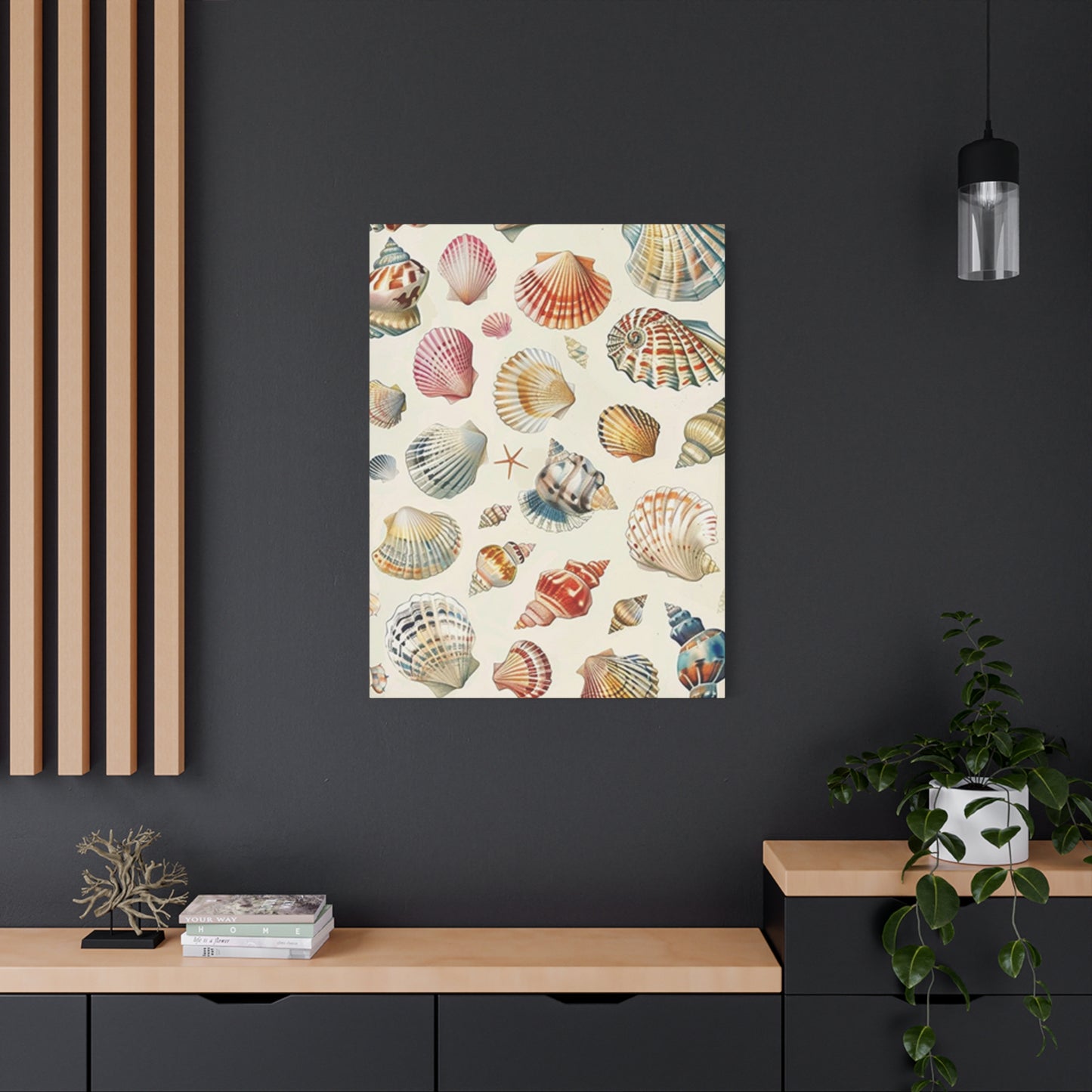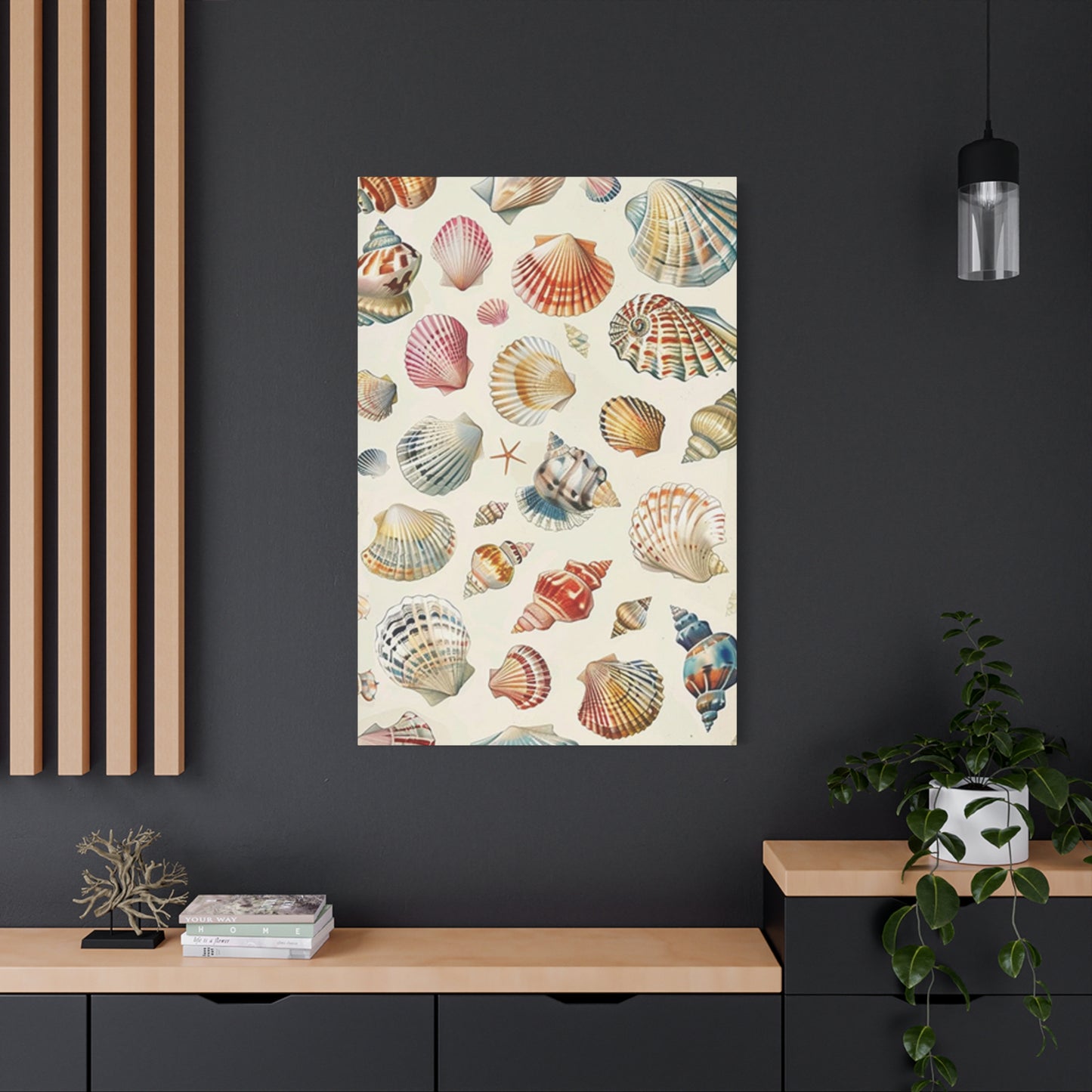The Ultimate Guide to Decorating with Colorful Shell Painting Wall Art
Creating beautiful environments with botanical artwork requires understanding how different elements work together to achieve sophisticated results. Shell Painting Wall Art has become increasingly popular as homeowners seek to bring natural elements into their living environments while maintaining elegant aesthetics. This comprehensive approach to styling with botanical paintings, canvas prints, and mixed media pieces offers endless possibilities for personalizing any room while creating focal points that capture attention and inspire conversation.
The art of incorporating Shell Painting artwork into home environments goes beyond simply hanging pictures on walls. It involves understanding color theory, spatial relationships, lighting considerations, and how different botanical subjects can evoke specific moods and atmospheres. Whether working with vintage botanical prints, contemporary abstract Shell Painting compositions, or photographic nature studies, each piece contributes to the overall ambiance of a room while reflecting personal taste and lifestyle preferences.
Successful Shell Painting Wall Art styling requires consideration of multiple factors including room function, existing color schemes, furniture placement, and natural lighting patterns throughout the day. Professional designers often emphasize the importance of creating visual balance while allowing individual pieces to maintain their unique character and impact. This approach ensures that botanical artwork enhances rather than overwhelms the existing environment while providing opportunities for seasonal updates and personal expression.
Choosing the Perfect Shell Painting Canvas Art for Your Home
Selecting appropriate botanical artwork requires careful consideration of both aesthetic preferences and practical requirements. The size of available wall surfaces, ceiling height, furniture placement, and room proportions all influence which pieces will work most effectively in specific environments. Large-scale Shell Painting canvases can create dramatic focal points in spacious rooms, while smaller botanical prints work well in intimate settings or as part of gallery wall arrangements.
Color palette considerations play a crucial role in selecting Shell Painting artwork that complements existing home decor elements. Warm-toned botanical pieces featuring oranges, reds, and yellows can energize environments and create welcoming atmospheres, while cool-toned blues, greens, and purples promote tranquility and relaxation. Neutral botanical artwork offers versatility and longevity, working well with changing seasonal decor and furniture updates throughout the years.
The style of Shell Painting artwork should align with overall home aesthetics while providing opportunities for personal expression. Contemporary abstract botanical pieces work well in modern minimalist environments, while detailed realistic flower paintings complement traditional or transitional decorating approaches. Mixed media Shell Painting compositions can bridge different style preferences and create unique focal points that spark conversation and interest.
Frame selection significantly impacts how Shell Painting artwork appears within home environments. Simple, clean-lined frames allow botanical subjects to take center stage, while ornate decorative frames can enhance traditional or vintage-inspired pieces. Frameless canvas prints offer contemporary appeal and work particularly well in casual or modern settings where clean lines and uncluttered aesthetics are preferred.
Consideration of the artistic medium affects both visual impact and longevity of Shell Painting Wall Art pieces. Oil paintings offer rich texture and depth, while watercolor botanicals provide delicate, ethereal qualities. Digital prints and photography can capture incredible detail and vibrant colors, making them excellent choices for contemporary environments seeking crisp, clean artistic statements.
The subject matter within Shell Painting artwork influences the emotional response and atmosphere created within different rooms. Delicate spring flowers can bring freshness to bedrooms and bathrooms, while bold tropical blooms work well in social areas like living rooms and dining areas. Subtle botanical sketches complement studies and offices, while dramatic Shell Painting abstracts make powerful statements in entryways and hallways.
Creating Stunning Gallery Walls with Botanical Paintings
Gallery wall arrangements offer opportunities to combine multiple Shell Painting pieces while creating cohesive visual displays that reflect personal taste and artistic preferences. Successful botanical gallery walls require careful planning to ensure proper spacing, visual balance, and harmonious color relationships between different pieces. Starting with a focal point piece and building outward allows for organic growth and adjustment as collections develop over time.
The arrangement of botanical prints within gallery walls should consider both individual piece characteristics and overall composition flow. Mixing different sizes creates visual interest while maintaining balance through strategic placement of larger anchor pieces. Varying frame styles can add texture and personality while consistent matting or color coordination helps unify diverse botanical subjects and artistic styles.
Spacing between individual pieces affects the overall impact of botanical gallery walls. Closer groupings create intimate, cozy atmospheres while wider spacing allows individual pieces to maintain distinct identity. Professional designers often recommend maintaining consistent spacing of two to three inches between frames while adjusting for specific wall dimensions and furniture placement considerations.
Height placement of botanical gallery walls should accommodate both standing and seated viewing perspectives. The center point of arrangements typically works best at eye level, approximately 57 to 60 inches from floor level. However, furniture placement may require adjustments to ensure proper visual relationships and comfortable viewing from primary seating areas within each room.
Color flow throughout botanical gallery walls creates cohesion while allowing individual pieces to maintain their unique character. Repeating accent colors from different Shell Painting pieces helps tie arrangements together, while varying tones and intensities prevents monotony. Neutral backgrounds in some pieces can provide visual rest areas while allowing more vibrant botanical subjects to take center stage.
Lighting considerations significantly impact the effectiveness of botanical gallery walls. Natural lighting changes throughout the day, affecting how colors appear and which pieces receive emphasis. Supplemental picture lighting or strategically placed accent lights can enhance individual pieces while maintaining overall balance during evening hours when natural light is unavailable.
Seasonal rotation opportunities within botanical gallery walls allow for ongoing refreshment and personal expression. Keeping some pieces constant while changing others creates familiarity combined with novelty. This approach also allows botanical collections to grow gradually while maintaining curated, intentional appearances rather than cluttered or overwhelming displays.
Color Coordination Techniques for Shell Painting Art
Understanding color relationships enables more sophisticated approaches to incorporating Shell Painting artwork into existing home environments. Complementary colors create vibrant, energetic displays while analogous color schemes promote harmony and tranquility. Monochromatic approaches using different shades and tints of single colors create sophisticated, cohesive looks that work well in minimalist or contemporary settings.
The emotional impact of different colors in Shell Painting artwork affects room atmospheres and occupant moods. Warm colors including reds, oranges, and yellows stimulate conversation and social interaction, making them excellent choices for dining areas and living rooms. Cool colors such as blues, greens, and purples promote relaxation and contemplation, working well in bedrooms, bathrooms, and study areas.
Neutral color palettes in botanical artwork provide flexibility for future decorating changes while maintaining timeless appeal. Sepia-toned botanical prints, black and white photography, and artwork featuring beiges, grays, and creams work well with various color schemes and furniture styles. These pieces can serve as foundation elements while accent colors are introduced through textiles, accessories, and seasonal decorations.
Color intensity considerations help balance Shell Painting artwork with surrounding elements. Highly saturated, vibrant botanical pieces work well as focal points but should be balanced with more subtle surrounding elements to prevent visual overwhelm. Soft, muted Shell Painting colors blend easily with existing decor while providing gentle color enhancement without dominating the environment.
The size of color areas within Shell Painting artwork affects visual impact and room integration. Large areas of single colors create bold statements while small color accents provide subtle enhancement. Understanding how color proportions work within individual pieces helps in selecting artwork that will integrate successfully with existing furniture, textiles, and architectural elements.
Seasonal color considerations allow for ongoing enjoyment and freshness in Shell Painting artwork selections. Spring-inspired pastels work well during warmer months while deeper, richer botanical colors complement autumn and winter environments. Having options for seasonal rotation keeps home environments feeling current and responsive to natural cycles and changing preferences.
Color temperature consistency throughout rooms helps create cohesive environments when incorporating multiple Shell Painting pieces. Warm-toned lighting enhances artwork featuring oranges, reds, and yellows while cool lighting complements blues, greens, and purples. Understanding these relationships helps in both artwork selection and lighting design for optimal visual results.
Lighting Solutions for Botanical Artwork
Proper illumination significantly enhances the visual impact and longevity of Shell Painting Wall Art while protecting valuable pieces from damage. Natural lighting provides excellent color rendering but requires careful consideration of UV exposure and heat generation that can fade or damage delicate botanical prints and paintings over time. Strategic placement near windows can provide beautiful lighting while avoiding direct sunlight exposure.
Picture lighting systems offer precise illumination control for individual botanical pieces or gallery wall arrangements. LED picture lights provide energy efficiency while generating minimal heat that could damage artwork. Adjustable picture lights allow for customization based on specific piece requirements and changing seasonal lighting conditions throughout the year.
Track lighting systems provide flexibility for illuminating multiple botanical pieces while allowing for easy repositioning as collections change and grow. Adjustable track heads can be directed toward specific pieces while providing general ambient lighting for overall room function. Dimmer controls allow for varied lighting levels appropriate for different times of day and activities.
Recessed lighting offers clean, unobtrusive illumination for Shell Painting artwork while maintaining streamlined ceiling appearances. Eyeball trim allows for precise directional control while wall wash techniques can provide gentle, even illumination across larger botanical displays. Proper spacing and beam angles ensure adequate coverage without creating glare or hot spots.
Natural lighting enhancement techniques maximize available daylight while protecting valuable botanical artwork. Sheer window treatments filter harsh sunlight while maintaining brightness levels that enhance Shell Painting colors and details. Strategically placed mirrors can reflect natural light toward artwork areas while creating interesting lighting effects throughout the day.
Color rendering considerations affect how Shell Painting artwork appears under different lighting conditions. Full spectrum LED lighting provides excellent color accuracy while energy efficiency and long life reduce maintenance requirements. Understanding color temperature ratings helps in selecting lighting that enhances rather than distorts the intended colors within botanical pieces.
Lighting control systems allow for varied illumination based on time of day, activities, and mood preferences. Programmable systems can provide gentle morning lighting that gradually increases throughout the day while offering intimate evening lighting for relaxation and entertainment. Smart lighting systems enable remote control and customization for optimal botanical artwork presentation.
Room-by-Room Styling Strategies
Living room environments offer excellent opportunities for larger Shell Painting pieces that can serve as conversation focal points while complementing seating arrangements and entertainment functions. Botanical artwork above sofas should relate proportionally to furniture dimensions while maintaining appropriate height relationships for comfortable viewing from various seating positions throughout the room.
Dining room botanical displays can enhance meal experiences while reflecting seasonal changes and personal style preferences. Shell Painting artwork featuring food-related botanicals such as herbs, fruits, or vegetables creates thematic connections while maintaining sophisticated artistic appeal. Proper sizing ensures artwork complements rather than competes with table settings and serving activities.
Bedroom Shell Painting Wall Art should promote relaxation and tranquility while reflecting personal taste and creating intimate atmospheres. Softer botanical subjects and colors work well in these private environments while providing visual interest without overwhelming peaceful sleep environments. Placement above headboards creates natural focal points while maintaining appropriate proportions for furniture relationships.
Kitchen botanical displays can include herb gardens, fruit studies, or vegetable illustrations that relate to cooking and food preparation activities. Smaller pieces work well in kitchen environments where cabinet and appliance placement may limit wall availability. Moisture-resistant framing and materials ensure longevity in environments with varying humidity and temperature conditions.
Bathroom botanical artwork requires careful material and framing considerations to withstand moisture and humidity while providing visual enhancement. Watercolor botanicals, photographic prints with moisture-resistant framing, or canvas pieces sealed for bathroom use can transform utilitarian environments into spa-like retreats while maintaining practical functionality.
Home office and study environments benefit from botanical artwork that promotes concentration while providing visual relief from computer screens and paperwork. Subtle botanical prints or sketches work well in these focused environments while more dramatic pieces can serve as inspiration and creative stimulation during work breaks and planning sessions.
Entryway and hallway botanical displays create welcoming first impressions while guiding traffic flow throughout homes. Series arrangements work well in longer hallways while statement pieces can transform entryways into impressive greeting areas. Proper lighting ensures botanical artwork is visible and appreciated by both residents and visitors throughout the day.
Seasonal Botanical Display Ideas
Spring botanical arrangements celebrate renewal and growth through fresh color palettes and delicate Shell Painting subjects. Cherry blossoms, tulips, daffodils, and other early blooming flowers bring optimism and energy to home environments after long winter months. Watercolor techniques and soft pastels work particularly well for capturing the ethereal quality of spring botanical subjects.
Summer Shell Painting displays can feature bold, vibrant colors and tropical or garden subjects that reflect the abundance and energy of the growing season. Sunflowers, hibiscus, roses in full bloom, and lush garden scenes create dramatic focal points while celebrating the intensity and warmth of summer months. Larger canvas pieces work well for capturing the expansive feeling of summer landscapes.
Autumn botanical artwork featuring changing leaves, harvest subjects, and deeper color palettes creates warmth and richness appropriate for cooler months. Maple leaves, oak branches, pumpkin vines, and woodland scenes provide natural transitions from summer brightness to winter contemplation. Warm lighting enhances the golden and russet tones characteristic of autumn botanical subjects.
Winter botanical displays can focus on evergreen subjects, bare branch studies, or greenhouse botanical collections that provide visual warmth during cold months. Holly branches, pine studies, amaryllis, and other winter-blooming plants offer opportunities for seasonal display while maintaining connection to natural cycles throughout the year.
Holiday botanical arrangements can incorporate traditional seasonal plants while maintaining sophisticated artistic appeal. Poinsettias, Christmas roses, winter berries, and evergreen arrangements provide festive touches without overwhelming existing decor schemes. Temporary additions to permanent botanical collections allow for holiday celebration while maintaining year-round cohesion.
Transitional seasonal displays bridge different months while allowing gradual changes that reflect natural seasonal progression. Overlapping themes and gradual color shifts create smooth transitions while maintaining visual interest and connection to changing outdoor environments throughout the year.
Seasonal rotation strategies allow botanical collections to remain fresh and current while maximizing investment in quality artwork. Core pieces can remain constant while seasonal additions provide novelty and celebration of natural cycles. Storage solutions for rotated pieces ensure protection while maintaining organization for easy seasonal changes.
Mixing Botanical Art with Other Decor Elements
Textile coordination with botanical wall art creates cohesive room designs while allowing for seasonal updates and personal expression. Repeating botanical colors in throw pillows, curtains, and upholstery creates connections while varying textures and patterns prevents monotony. Natural fiber textiles complement botanical themes while providing comfort and functionality.
Furniture placement considerations ensure botanical artwork receives appropriate attention while maintaining functional room layouts. Artwork should relate proportionally to furniture dimensions while creating visual balance throughout rooms. Console tables, bookcases, and other furniture pieces can provide platforms for complementary botanical accessories and seasonal displays.
Sculptural botanical elements including ceramic planters, metal garden sculptures, and carved wooden pieces can bridge the gap between two-dimensional wall art and three-dimensional room elements. These pieces create layered visual interest while reinforcing botanical themes throughout home environments.
Live plant integration with botanical wall art creates dynamic relationships between artistic representations and living specimens. Carefully selected plants can echo colors, forms, or species featured in artwork while providing seasonal changes and ongoing care requirements that connect residents with natural processes and cycles.
Architectural element enhancement allows botanical wall art to work with existing structural features rather than competing for attention. Crown molding, chair rails, and other architectural details can frame and enhance botanical displays while creating sophisticated integrated appearances that feel intentional and professionally designed.
Accessory coordination including vases, candles, books, and decorative objects can reinforce botanical themes while providing opportunities for personal expression and seasonal updates. Natural materials such as wood, stone, and metal complement botanical artwork while creating textural interest and tactile appeal.
Color flow considerations ensure botanical wall art integrates seamlessly with surrounding elements while maintaining visual coherence throughout connected living areas. Repeated accent colors and coordinated neutral backgrounds create unity while allowing individual pieces to maintain their unique character and impact.
Professional Framing and Presentation Options
Frame material selection significantly impacts both the appearance and longevity of botanical wall art while reflecting overall home aesthetics and personal style preferences. Wood frames offer warmth and natural connection while metal frames provide contemporary clean lines and durability. Composite materials can offer cost-effective options while maintaining attractive appearances and protective qualities.
Mat selection provides opportunities for color coordination while protecting artwork from direct glass contact and moisture issues. Acid-free materials prevent deterioration while various color options can enhance or complement botanical subjects. Double matting creates depth and sophistication while allowing for subtle color introductions that enhance without overwhelming artwork.
Glass and acrylic glazing options provide protection while affecting appearance and safety considerations. Regular glass offers excellent clarity while UV-filtering glass protects against fading and deterioration. Acrylic glazing provides shatter resistance and lighter weight while maintaining good optical qualities for most botanical artwork applications.
Conservation framing techniques ensure valuable botanical pieces receive appropriate protection while maintaining accessibility for viewing and enjoyment. Acid-free materials, proper spacing, and moisture barriers protect against environmental damage while archival techniques ensure longevity for treasured pieces and investment artwork.
Custom framing allows for specific size requirements while ensuring perfect fit and professional appearance. Local framing shops can provide expert advice while online services offer convenient options for standard sizes. Understanding basic framing terminology helps in communicating preferences and requirements for optimal results.
Frameless presentation options including canvas wraps, mounted prints, and standoff mounting systems provide contemporary alternatives while reducing costs and simplifying installation. These approaches work particularly well in casual or modern environments where clean lines and minimal visual interruption are preferred.
Display hanging systems including picture wire, sawtooth hangers, and French cleat systems provide secure mounting while allowing for easy repositioning and rotation. Professional installation ensures proper weight distribution and wall protection while maintaining level placement and optimal viewing angles for botanical artwork collections.
Budget-Friendly Botanical Art Solutions
Print reproduction options provide access to famous botanical artwork and contemporary pieces at affordable prices while maintaining excellent visual quality. Digital printing technology offers archival inks and papers that provide longevity and color accuracy suitable for home display while significantly reducing costs compared to original artwork.
DIY framing projects can reduce costs while providing opportunities for personal customization and creative expression. Basic framing supplies and techniques allow for professional-looking results while building skills and confidence for future projects. Online tutorials and local workshops provide guidance for successful DIY framing endeavors.
Printable botanical art downloads offer immediate access to diverse collections while allowing for sizing flexibility and multiple uses throughout homes. Digital files can be printed at various sizes and on different papers while providing options for seasonal rotation and gift giving at minimal additional costs.
Thrift store and estate sale discoveries can yield valuable botanical prints and artwork at a fraction of retail costs while providing unique pieces with history and character. Careful inspection and basic restoration techniques can transform discovered pieces into attractive home displays while building interesting collections over time.
Photography projects using local botanical subjects can create personalized artwork while developing creative skills and connection to regional flora. Digital cameras and editing software enable high-quality results while printing options range from home printers to professional services based on desired outcomes and budgets.
Art student and local artist collaborations provide opportunities for affordable original pieces while supporting developing artists and building community connections. Commission work can result in personalized botanical pieces that reflect specific preferences and home environments while remaining within reasonable budgets.
Rental and rotation services in some areas provide access to changing botanical artwork displays without long-term commitments or storage requirements. These services work particularly well for renters or those who prefer frequent changes while maintaining access to professional-quality pieces.
Advanced Styling Techniques
Layering botanical pieces at different depths creates sophisticated visual interest while maximizing wall utilization. Floating shelves can display smaller botanical prints in front of larger pieces while maintaining accessibility for rotation and seasonal changes. This technique works particularly well in contemporary environments seeking dynamic, evolving displays.
Scale mixing strategies combine various sizes of botanical artwork to create dynamic compositions that maintain visual balance while preventing monotony. Large anchor pieces provide focal points while smaller complementary pieces fill surrounding areas and create transitional elements that guide eye movement throughout displays.
Symmetrical and asymmetrical arrangement principles offer different approaches to botanical wall displays based on room characteristics and personal preferences. Symmetrical arrangements provide formal, balanced appearances while asymmetrical compositions create movement and informal elegance that works well in casual or contemporary environments.
Color gradient techniques arrange botanical pieces according to color progression, creating flowing transitions that guide attention while maintaining cohesion. This approach works particularly well with larger collections where subtle color relationships can be emphasized through careful placement and lighting considerations.
Texture mixing incorporates various artistic techniques and materials within botanical displays, creating tactile interest and visual depth. Combining watercolor delicacy with bold acrylic techniques or mixing photographic prints with sketched botanicals adds complexity while maintaining thematic unity.
Theme development strategies create narrative flows within botanical displays while allowing for personal expression and storytelling. Garden to table themes, seasonal progression displays, or regional flora collections provide organizational frameworks that guide selection while maintaining flexibility for growth and change.
Architectural integration techniques use existing structural elements to enhance botanical displays while creating seamless relationships between artwork and built environments. Alcoves, built-in shelving, and architectural details can frame and enhance botanical pieces while creating sophisticated integrated appearances.
Creating Focal Points with Statement Pieces
Large-scale botanical artwork commands attention while establi shing room character and reflecting personal style preferences. Oversized Shell Painting canvases work particularly well above seating areas, in dining rooms, or as entryway statements where dramatic impact enhances architectural features and creates memorable first impressions.
Artistic technique emphasis highlights unique characteristics of individual botanical pieces while creating conversation starters and educational opportunities. Mixed media pieces, unusual color combinations, or innovative presentation approaches draw attention while demonstrating artistic appreciation and personal taste development.
Placement strategies for statement botanical pieces require consideration of viewing angles, lighting conditions, and surrounding elements to maximize impact while maintaining room functionality. Central locations with adequate surrounding visual breathing room allow statement pieces to command attention without overwhelming other room elements.
Complementary element coordination ensures statement botanical pieces integrate successfully with existing decor while maintaining their prominent status. Subtle color repetition, proportional relationships, and supporting accessories enhance without competing for attention or diminishing the impact of focal point artwork.
Seasonal spotlight techniques allow different botanical pieces to serve as temporary focal points while maintaining collection cohesion and preventing any single piece from becoming visually stale. Lighting adjustments, surrounding element changes, or repositioning can shift emphasis while maintaining overall display integrity.
Investment considerations for statement botanical pieces include both immediate visual impact and long-term enjoyment potential. Quality materials, timeless subjects, and superior craftsmanship ensure ongoing satisfaction while providing stable or appreciating value for significant artwork investments.
Professional installation for large or valuable statement pieces ensures proper mounting, optimal positioning, and wall protection while maintaining safety and security. Expert installation prevents damage while achieving precise placement that maximizes visual impact and viewing enjoyment.
Botanical Art Trends and Contemporary Styles
Minimalist botanical approaches emphasize clean lines, simple compositions, and restrained color palettes that complement contemporary home aesthetics while maintaining connection to natural subjects. Single specimen studies, geometric arrangements, and negative area utilization create sophisticated modern botanical displays.
Abstract botanical interpretations offer artistic freedom while maintaining recognizable natural elements that connect with viewers on emotional levels. Color exploration, gestural techniques, and interpretive approaches create unique pieces that bridge traditional botanical accuracy with contemporary artistic expression.
Digital botanical art techniques enable new creative possibilities while offering accessibility and customization options for contemporary homes. Computer-generated botanical compositions, digitally enhanced photography, and mixed digital and traditional media create cutting-edge displays that reflect technological integration in artistic expression.
Vintage botanical revival movements celebrate historical scientific illustration while providing timeless appeal that transcends temporary decorating trends. Reproduction antique botanical prints, authentic vintage pieces, and contemporary works inspired by traditional techniques offer sophisticated alternatives to purely modern approaches.
Mixed media botanical combinations incorporate various materials and techniques within single pieces, creating textural interest and unique artistic statements. Collage elements, dimensional additions, and combined traditional and digital techniques offer innovative approaches that distinguish contemporary botanical collections.
Global botanical influences introduce diverse cultural perspectives and regional flora into home displays while expanding artistic horizons and personal education. International botanical traditions, exotic species, and cross-cultural artistic approaches create interesting and educational display opportunities.
Sustainable botanical art practices emphasize environmentally responsible materials and production methods while supporting ethical artistic practices. Recycled papers, non-toxic inks, sustainable framing materials, and local artist support create environmentally conscious collections that reflect contemporary values and concerns.
Integration in Botanical Displays
Digital frame systems enable rotating botanical displays while maximizing wall utilization and providing ongoing variety without physical artwork changes. High-resolution displays, wireless connectivity, and subscription services provide access to extensive botanical collections while maintaining contemporary technological integration.
Smart lighting systems optimize botanical artwork presentation while providing convenient control and energy efficiency. Programmable systems can adjust color temperature and intensity based on time of day, season, or specific artwork requirements while enabling remote control and automation capabilities.
Augmented reality applications enhance botanical wall art experiences by providing additional information, interactive elements, or virtual changes to existing displays. Smartphone and tablet applications can overlay information about plant species, artistic techniques, or related botanical subjects while maintaining traditional artwork appreciation.
QR code integration provides immediate access to information about botanical pieces, artist backgrounds, or related educational content while maintaining clean visual presentations. Discreet placement allows interested viewers to access additional information without disrupting others' viewing experiences or cluttering display areas.
Virtual gallery platforms enable online sharing and documentation of botanical collections while providing backup records and insurance documentation. Cloud-based storage systems protect digital records while enabling sharing with family, friends, or insurance providers for valuation and protection purposes.
Temperature and humidity monitoring systems protect valuable botanical collections while providing data for environmental control and conservation purposes. Smart sensors can alert owners to potentially damaging conditions while enabling proactive protective measures and optimal display environments.
Home automation integration connects botanical artwork lighting and environmental systems with overall smart home management while providing convenient control and energy optimization. Unified control systems enable coordinated lighting scenes that enhance botanical displays while supporting various room functions and activities.
Professional Design Principles
Balance considerations in botanical displays require understanding of visual weight, color impact, and spatial relationships to create harmonious arrangements that feel stable and pleasing. Symmetrical balance provides formal elegance while asymmetrical balance offers dynamic interest and contemporary appeal depending on overall home aesthetics.
Proportion principles guide sizing decisions for botanical artwork relative to room dimensions, furniture scales, and architectural features to ensure appropriate relationships and visual harmony. Mathematical ratios and intuitive assessment both contribute to successful proportional decisions that feel natural and properly scaled.
Rhythm creation through repeated elements, color patterns, or compositional similarities helps unify botanical displays while guiding eye movement and creating cohesive visual experiences. Regular rhythm provides predictability while progressive rhythm offers building intensity and visual excitement throughout displays.
Emphasis techniques highlight focal point botanical pieces while maintaining overall display cohesion and preventing visual competition between different elements. Size, color, placement, and lighting all contribute to emphasis control while ensuring primary pieces receive appropriate attention without overwhelming supporting elements.
Unity strategies connect diverse botanical pieces into cohesive displays while allowing individual character and interest. Common color elements, similar framing approaches, or thematic connections create unity while preventing monotony through careful variation and contrast introduction.
Contrast utilization adds visual interest while highlighting specific botanical pieces or characteristics through differences in size, color, texture, or style. Appropriate contrast levels create excitement without chaos while guiding attention to intended focal points and supporting overall display objectives.
Hierarchy establishment guides viewer attention through botanical displays while ensuring important pieces receive appropriate emphasis. Primary, secondary, and supporting elements work together to create clear visual organization that feels intentional and professionally designed rather than random or cluttered.
Conclusion
The art of styling with Shell Painting Wall Art represents a sophisticated approach to home decoration that goes far beyond simply hanging pictures on walls. Throughout this comprehensive exploration, we have examined the multifaceted nature of incorporating botanical artwork into modern living environments while creating harmonious, visually appealing, and personally meaningful displays that reflect individual taste and lifestyle preferences.
Successful Shell Painting Wall Art styling requires understanding of multiple interconnected elements including color theory, spatial relationships, lighting considerations, and the emotional impact of different botanical subjects. The techniques and strategies outlined throughout this guide provide frameworks for making informed decisions while allowing for personal creativity and expression. From selecting appropriate pieces to professional framing, lighting design, and seasonal rotation, each aspect contributes to the overall success of botanical displays while ensuring long-term satisfaction and enjoyment.
The versatility of botanical artwork enables its successful integration into diverse home environments and decorating styles. Whether pursuing minimalist contemporary aesthetics, traditional elegance, or eclectic personal expression, Shell Painting Wall Art offers options that can enhance rather than overwhelm existing design elements while providing opportunities for seasonal updates and evolving personal preferences. The room-by-room strategies discussed demonstrate how botanical artwork can serve different functions while maintaining cohesive connections throughout homes.
Budget considerations need not limit the beauty and impact of botanical displays, as explored through various affordable options including reproductions, DIY approaches, and creative sourcing strategies. The democratization of high-quality printing technology and online resources has made sophisticated botanical artwork accessible to diverse budgets while maintaining professional appearance and longevity. These options enable gradual collection building while developing personal taste and expertise.
Professional techniques and advanced styling strategies provide opportunities for those seeking sophisticated, gallery-quality results while building confidence and skills for future projects. Understanding proper framing, installation, maintenance, and care ensures investment protection while maximizing visual impact and longevity. The integration of technology and smart home systems offers contemporary approaches while maintaining traditional artistic appreciation.
The emotional and psychological benefits of incorporating natural elements through botanical wall art contribute significantly to home environments and personal well-being. The connection to natural cycles, seasonal changes, and botanical beauty provides ongoing satisfaction while creating environments that feel nurturing, inspiring, and personally meaningful. These benefits extend beyond mere decoration to encompass lifestyle enhancement and emotional support through daily interaction with natural beauty.
Looking toward the future, botanical wall art continues evolving through new artistic techniques, materials, and presentation methods while maintaining timeless appeal and connection to natural subjects. Contemporary trends including sustainability, technology integration, and global cultural influences provide exciting opportunities for collection development while respecting traditional botanical art forms and techniques.
The journey of creating beautiful botanical displays within homes represents an ongoing process of discovery, learning, and personal expression rather than a destination. As collections develop and personal preferences evolve, the principles and techniques outlined in this guide provide stable foundations while allowing for creative exploration and adaptation to changing circumstances and opportunities.
Ultimately, the success of Shell Painting Wall Art styling lies in creating environments that feel authentic, personally meaningful, and visually satisfying while reflecting individual personalities and lifestyle requirements. The investment in quality botanical artwork, proper presentation techniques, and thoughtful integration with existing home elements pays dividends through years of enjoyment while creating lasting beauty that enhances daily living experiences and provides pleasure for residents and visitors alike.

















